Solar Science Projects and the Sun's Corona Art

Scratch Art Design of the Sun's Corona by Kathleen Horner
"Sometimes I think of the Sun and Moon as lovers,
who rarely meet, always chase,
and almost always miss one another.
But, once in awhile they do catch up,
and they kiss,
and the world stares
in awe of their eclipse."
By Fiona Newbury ©2014
This coming August 21st we in the United States will be celebrating the occurrence of a total solar eclipse. Others outside the path (penumbra) will also be participating in partial views of the eclipse. I live in a city where the path of totality (umbra) will pass right through so I am really enthusiastic and excited about that! In this special blog I will be sharing some creative science art and solar science projects with you as we prepare for this big solar event.
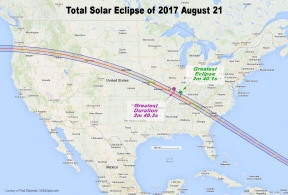
What happens when we have a total solar eclipse? It's a type of eclipse that happens during the New Moon phase when the Moon passes between the Sun and Earth whereby the Moon fully blocks (or in science terms-occults) the Sun. Check out the illustration below:
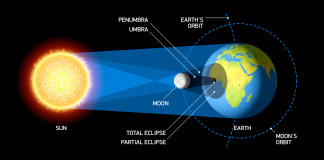
When viewing a solar eclipse most people fail to take note of the local wildlife around them. The animals and insects are affected by the darkening sky. As the blue sky transforms into a deep twilight state and a slight temperature drop occurs, songbirds' diurnal rhythms will be affected where they will become quiet in their nests, lightening bugs may come out, nocturnal animals may appear and other animals may feel the need to sleep.
During totality of the eclipse some dazzling and dramatic things also happen--this year, four planets will be visible. Those planets will be Venus, Jupiter, Mars and Mercury plus you will see some of the brightest stars in the sky like Sirius, Capella to the northwest and Arcturus to the east. I am looking forward to witnessing that on a summer afternoon.
The most important thing to remember is to choose a safe pair of eclipse glasses. Take time out to read the link below on eclipse eyeglass safety from the American Astronomical Society page. https://eclipse.aas.org/eye-safety/eyewear-viewers
Sun's Corona Art Designs
Below is a sketch of the sun's corona during an eclipse in Guelma, Algeria by K. Graff in 1905. Before photography became popular for capturing astronomical images, most observers took to sketching. Also, included below are the two other phases of a total solar eclipse as the Moon slowly grazes the Sun: the Bailey Beads and Diamond Ring effect.
I felt inspired by K. Graff's sketch shown below to create my own Sun corona image utilizing the crayon-tempera paint scratch art method. (This art activity brought back memories of elementary school for me as I'm sure it will for some of you.) It is the perfect medium for capturing that 1.5 million degree solar atmosphere (the corona) against a stark black background. It's quite simple to do and all ages can get involved.
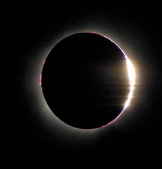 Bailey' Beads Phase, NASA
Bailey' Beads Phase, NASA

Diamond Ring Phase, NASA

Sketch of sun's corona by K. Graff, Algeria, August 1905
How to Create Your Own Sun's Corona Image
Materials
Poster Board
Box of Crayons
Black tempera paint
Dish soap
Scissors
Foam or smooth bristle brush
Scratching tools:
Toothpicks, butter knife, chopsticks, nail file, etc.
Begin the Art Process
Cut poster board to desired size.
Put black tempera paint into a bowl and add a few drops of dish soap detergent. Mix thoroughly and set aside. Note: Tempera paint is water based and is an easy clean up.
Choose a design--landscape from where you will be observing the eclipse or just focus on the sun's corona image alone. You can also sketch Bailey Beads or the Diamond Ring effect. Use your imagination.
Color in with a choice of different colored crayons to fit your design. Be sure to press down on the crayons to get a bright and bold color scheme. I used a yellow and orange corner border and simply colored in the rest with a black crayon. Use your artistic eye to create plumes, streamers, prominences and loops that are found in the Sun's atmosphere. Find a variety of photos to study for your design from NASA photo eclipse archives here: https://eclipse.gsfc.nasa.gov/SEhelp/SEphoto.html
Paint a fairly thick cover of black tempera paint over the whole crayon design. Allow to dry. Once it is dry, begin scratching in your solar design. You will see the white surface and crayon colors pop out as you scratch through the black paint. Best of luck in creating your very own solar design. Have fun!
The below project is featured in NASA's solar eclipse activity guide for 2017. The guide is chalk full of solar science projects and eclipse information. Take a look here: https://eclipse2017.nasa.gov/sites/default/files/NASA_Eclipse_Activity_Guide.pdf
How to Build a Solar Box Projector

What better time than the day of the total solar eclipse to pull out your own handmade spectroscope. Here's the detailed information on how to build one from my AstroCrafts blog on Astronomers Without Borders page. https://astronomerswithoutborders.org/awb-programs/arts-and-culture/astrocrafts/item/how-to-create-a-spectroscope.html
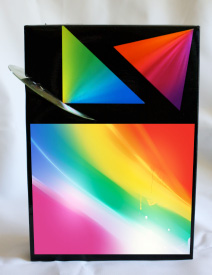 |
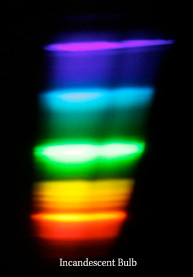 |
Side View of Spectroscope Incandescent Light Spectrum For those of you who are going to miss this year's total solar eclipse there are plenty more lined up for the future. After August 21, 2017, the next total solar eclipses will visit Mexico, the United States, Canada, South America, Antarctica and Canada. And if you are one of the lucky ones to view it next month, please share this informative blog with friends and family. Here's to clear skies for the great American solar eclipse!
Post a Member Report about this Program
Share your activities with others around the world by posting a Member Report for the worldwide astronomy community to see! Your reports help Astronomers Without Borders show sponsors how successful our programs are, too!





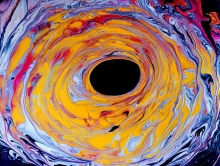

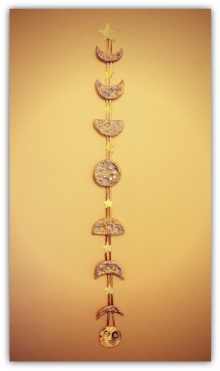


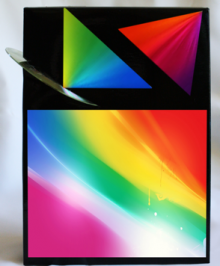

Comments